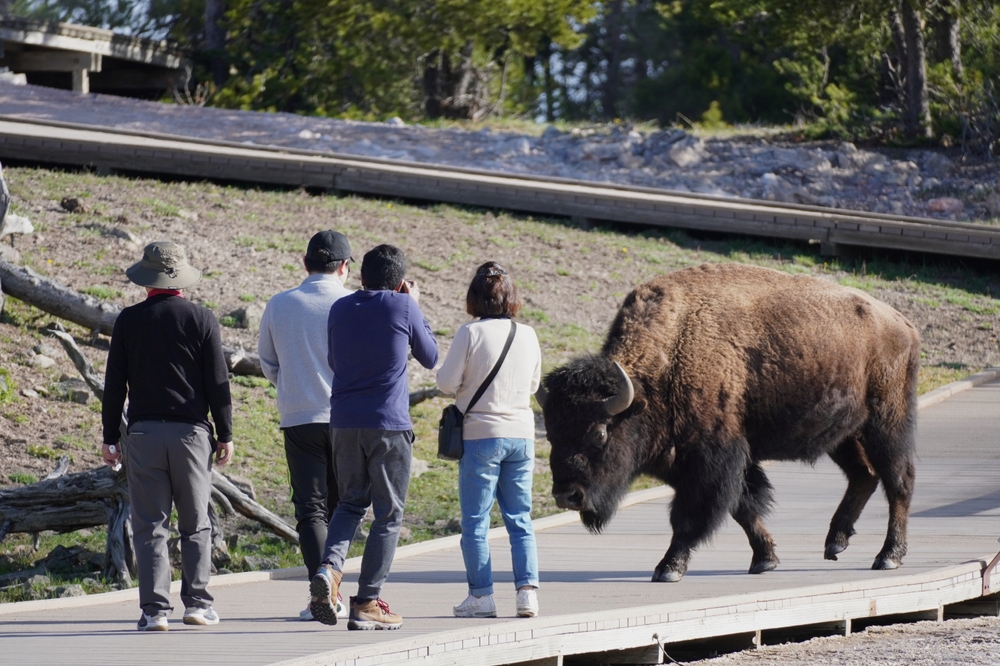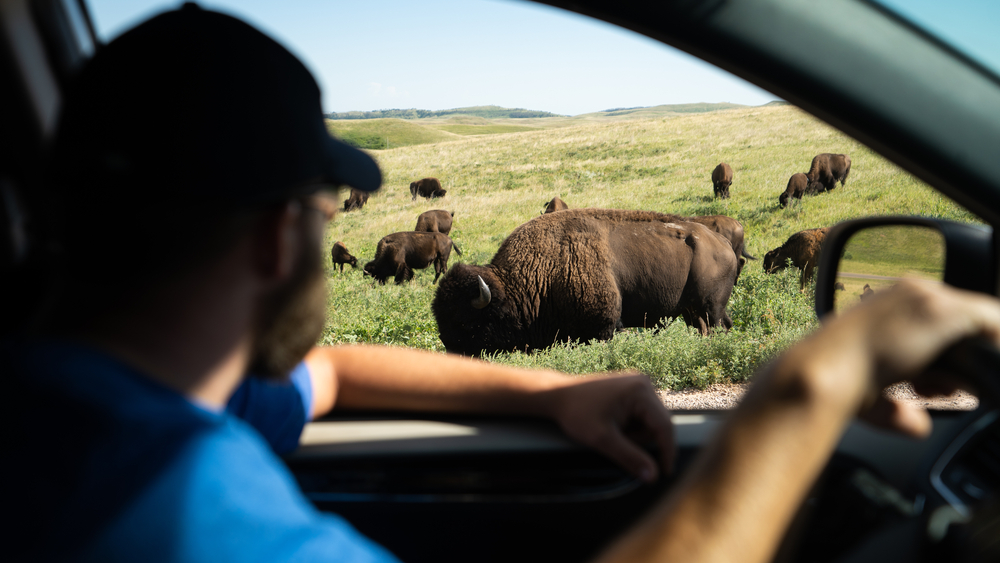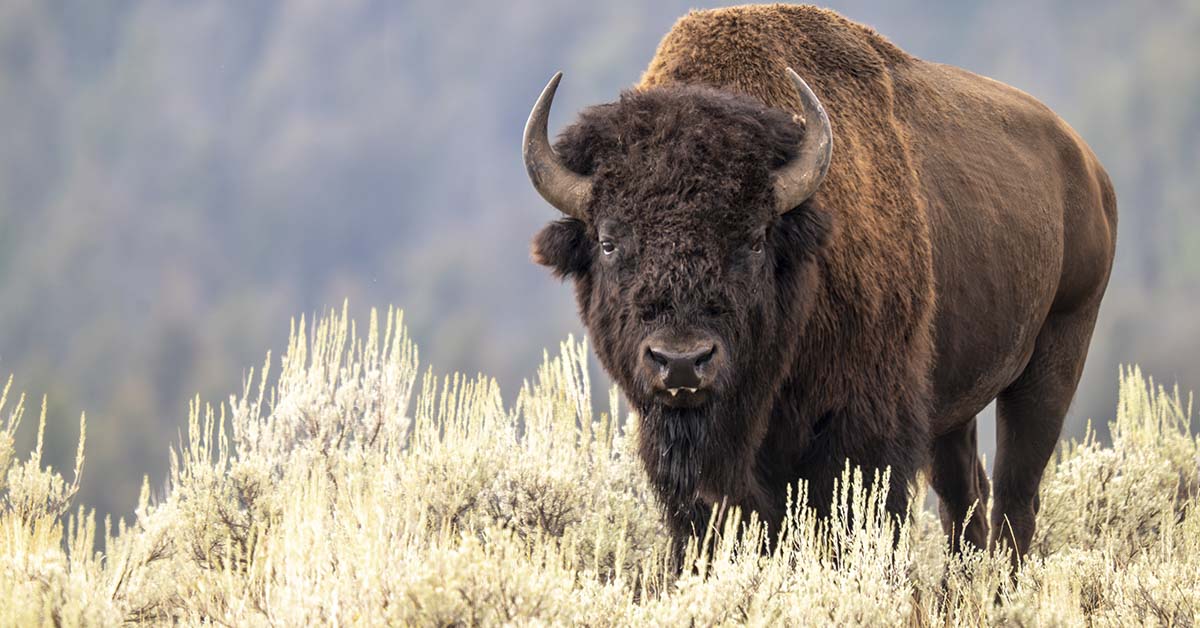Tourists at Yellowstone National Park recently witnessed a shocking and heartbreaking event. In a tragic Yellowstone bison death, a large bull wandered into a geothermal area, lost its footing, and fell into a boiling hot spring while visitors looked on in horror. The scalding water claimed the animal’s life in mere moments, serving as a vivid reminder of the park’s hidden dangers.
Yellowstone draws millions of visitors every year with its stunning geysers, bubbling hot springs, and vast, wild landscapes. However, behind the postcard-perfect views lies one of the most geologically active and hazardous environments on Earth. The park’s thermal features, beautiful as they may seem, are not just attractions but volatile natural phenomena.
This incident has once again raised questions about visitor behavior, wildlife safety, and the fine line between awe and danger in wild places. As much as Yellowstone offers a window into nature’s raw power, it also demands respect and caution. The recent bison fatality is not an isolated case but part of a pattern of hot spring accidents that have affected both animals and humans.
A Sudden and Devastating Accident
The fatal event took place near Silex Spring, located in the Fountain Paint Pot area of the park’s Lower Geyser Basin. Witnesses reported seeing the bison approach the spring, stumble, and fall into the boiling water. Steam erupted from the spring as the animal struggled briefly before slipping below the surface.
The water in these geothermal pools can reach temperatures as high as 199 degrees Fahrenheit. At such heat, survival is impossible. The Yellowstone bison death left many tourists in shock. Some tried to record what was happening, while others stood frozen in disbelief. Rangers arrived on the scene quickly, but nothing could be done to help the animal.
Yellowstone’s Hidden Hazards
Yellowstone’s breathtaking scenery is carved from one of the most geologically active areas in North America. The park sits atop a massive volcanic hotspot, which fuels its geysers, thermal pools, and steaming vents. What lies just beneath the surface, however, is anything but serene.
The ground near these features often looks solid, but it hides fragile, thin crusts. Beneath them are pools of boiling water or acidic mud. A single step off the trail can have deadly results. This incident is one of many hot spring accidents that have occurred in the park’s history.
Park officials repeatedly warn visitors to stay on designated trails and boardwalks, but those warnings sometimes go unheeded. Even wildlife, typically more attuned to the terrain, can fall victim to the park’s hidden dangers. In this case, officials believe the bison may have been startled by something, perhaps a predator or human presence, and unknowingly fled into danger.
Read More: 16 U.S National Parks That Have No Entrance Fees
A Pattern of Tragedies
The Yellowstone bison death is not the first thermal-related tragedy in the park. In 2016, a 23-year-old man died after attempting to soak in a hot spring. The heat and acidity of the water were so extreme that his body dissolved before it could be recovered.
That same year, another visitor suffered severe burns while trying to rescue a dog that had fallen into a thermal area. These events, while rare, illustrate the unpredictable and deadly nature of Yellowstone’s geothermal landscape.
Animals are typically cautious around hot springs, but stress or confusion can alter their natural instincts. In the case of the bison, fear or panic may have driven it into a place it would normally avoid.
Read More: Yellowstone’s Giantess Geyser erupts for first time in 6 years, roars ‘back to life’
Human Impact and Responsibility
Following the bison’s death, park officials once again urged visitors to respect Yellowstone’s wildlife and terrain. The park is not a zoo or an amusement area. It is a wild, living environment where both beauty and danger coexist.
Visitors are required to stay at least 25 yards from bison and elk, and 100 yards from bears and wolves. Unfortunately, many still get too close. Tourists often approach animals for selfies or crowd them with their vehicles, sometimes without understanding the potential consequences.

Even if visitors do not directly harm animals, their presence can create stress or alter natural behavior. This indirect influence can lead to fatal accidents. Hot spring accidents like this one highlight the importance of keeping a safe distance and minimizing human interference.
Read More: Why California’s Yosemite National Park is ‘On The Brink of Disaster’
Nature’s Power Demands Respect
Yellowstone’s charm lies in its wildness. Its landscapes are shaped by forces far older and stronger than any human presence. The same geysers and hot springs that inspire wonder can also bring swift and painful death.
The Yellowstone bison death is a sobering example of how quickly things can go wrong in a place like this. It reminds us that while nature is beautiful, it is also brutal and indifferent to human rules.
Too often, visitors forget that Yellowstone is not a safe, curated environment. There are no guardrails around its geysers or fences keeping animals in. The freedom and danger are part of what makes the park so extraordinary. But that freedom comes with a responsibility to remain alert, cautious, and respectful.

A Tragic Lesson From the Wild
The recent Yellowstone bison death at Silex Spring is not just a sad moment in the park’s history. It is a cautionary tale for everyone who enters a wild space. Nature does not offer second chances. One moment of distraction, one step off the path, can lead to disaster.
As Yellowstone continues to draw millions of visitors each year, education and awareness must go hand in hand with exploration. Every safety sign, ranger warning, and posted guideline exists for good reason. They are there to protect not only human visitors but the animals who call this remarkable place home.
So when you visit Yellowstone, enjoy the beauty, take your photos, and cherish the experience. But never forget that you are a guest in a landscape shaped by fire and time. And in such a place, the most important thing you can bring is respect.
Read More: 3 Visitors Banned From Yellowstone After Cooking Chickens in Hot Spring

